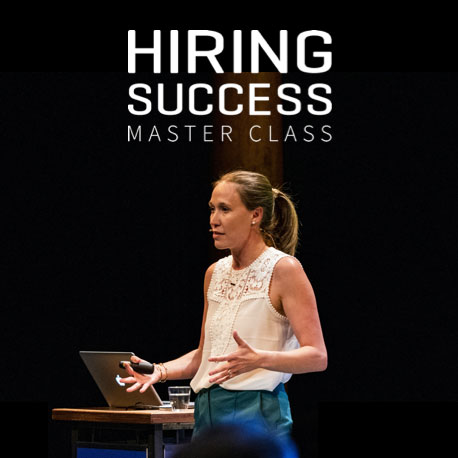Millennials represent more than thirty-five percent of the workforce and will account for more than seventy-five percent by 2030. Following that growth, in recent years the trend has been to hire millennials, whether they have the experience and skills or not, ignoring the other generations still in the workforce. Is that in the best interest of companies and their employees?
Why are companies hiring millennials?
According to an article from Pew Research Center, millennials are statistically better educated than their parents’ or grandparents’ generations. Mark Zuckerberg of Facebook was once even quoted as saying, “young people are just smarter.” This is just one reason among many that companies are hiring millennials. They bring fresh knowledge and new ways of thinking, they have a positive attitude towards work, are eager and enthusiastic, adapt easily, are willing to work long hours, and can be hired for less money.
Among Millennials, around four-in-ten (39%) of those ages 25 to 37 have a bachelor’s degree or higher, compared with just 15% of the Silent Generation, roughly a quarter of Baby Boomers and about three-in-ten Gen Xers (29%) when they were the same age.
Pew Research Center
What about the drawbacks of hiring a younger workforce?
Many people believe that younger employees can lack experience and skills, especially for specific roles that require work on the job experience, they tend to be overly confident of their abilities, have a harder time taking direction from their managers, are addicted to technology, and do not consider tweeting and instant messaging throughout the day as a diversion from work.

Additionally, they have difficulty accepting negative feedback but seek positive reinforcement from their managers. Due to a generation of indulgent parents, they have a sense of entitlement and expect the same from their bosses. Additionally, some believe that they are less likely to settle in an entry-level job for long before expecting a promotion. Millennials also tend to be less loyal to one company— a Gallup study shows that 21% of millennials say they’ve changed jobs in the past year — three times more than non-millennials.
What strategy should companies embrace in order to resolve the question of what generation(s) employers should target?
Incorporating age diversity to a company’s diversity platform and recruitment strategy will enable companies to be more successful and allow employees to be more productive.
What generations are still in the workforce?
Surprisingly to many, there are five generations still represented in today’s workforce, which consists of:
- Traditionalists: (also known as the Silent generation) born between 1925 and 1945
- Baby boomers: born between 1946 and 1964
- Generation X: born between 1965 and 1980
- Millennials: (also known as Generation Y) born between 1981 and 1995
- Generation Z: (also known as iGen) born 1996 and later
What are the benefits of an age-diversified workforce to companies and their employees?
Innovation

An age-diverse workforce creates more innovation. While one person may be better at generating innovative ideas, another person may be better at executing on those ideas. According to a report from Forbes Insights: “Senior executives are recognizing that a diverse set of experiences, perspectives, and backgrounds is crucial to innovation and the development of new ideas. When asked about the relationship between diversity and innovation, a majority of respondents agreed that diversity is crucial to encouraging different perspectives and ideas that foster innovation.”
Diversity of skills and experience
An age-diverse workforce broadens the array of skills and experience the company offers. Young employees tend to be savvier in the use of high-tech business mediums such as social networking, online business demonstrations and webcasts, while more mature employees have better interpersonal skills and perform well in more traditional face-to-face settings. These diverse range of skills offer an advantage to companies when marketing itself to a multi-generational demographic.
Employee performance
An age-diverse workforce improves performance because people are happier where they feel a part of a group and can be themselves at work. When an employee doesn’t feel comfortable it limits them from bringing their whole self and experiences to work. When I worked at a start-up years ago, their SoHo location primarily targeted millennials in their hiring practices. Whenever I walked into that office, I immediately felt old and stodgy. I was even once told that my ideas weren’t “hip” enough for that office. This made me inhibited and not want to share my ideas openly.
According to PriceWaterCoopers, “only 8% of organizations include age as a part of their D&I strategies.”
Alternatively, AT&T actively embraces age diversity with programs such as their>50 Employee Resource Group, which focuses on supporting professionals who are fifty and older. It also has another group that focuses on supporting young professionals, called oxyGEN, which sponsors events to educate seniors about mobile technology. Not only are these initiatives in age diversity beneficial to employees, they’re in the best interest of employers, too.

A study conducted by Boston Consulting Group found “that diversity is not just a metric to be strived for, it is actually an integral part of a successful revenue generating business. Of course, this makes sense because diversity means diversity of minds, ideas, and approaches— which allows teams to find a solution that takes into account multiple angles the problem, thus making the solution stronger, well rounded and optimized.”
What strategies should a company employ to manage an age-diverse workforce?
Don’t assume
Above I outlined several stereotypes of millennials (they can’t accept feedback, they’re indulgent, entitled, etc.). All generations are stereotyped, For example: older generations aren’t tech savvy. You may fall into the trap of accidental ageism if you draw conclusions with limited information. Managers need to take the time to get to know their employees individually and what skills and experience they offer.
Be flexible
Provide flexibility in the time and place that your employees get their work done. This allows employees to be actively engaged at work, while also managing their personal lives. Options including working from home, alternative work schedules, and freelance options are important to millennials to provide them with the work-life balance they crave. And with good reason. According to an article from the Predictive Index,“Employees who work remotely at least once a month report being happier than their desk-bound colleagues—and happy employees are more engaged employees!”

Millennials aren’t the only generational group that might find this perk attractive, however. For example. even though baby boomers are known as the 9-5 generation, flexibility may become important to them as they have aging parents to deal with in their families.
I can personally attest to the importance of this benefit. When I worked for a company after having my first child, I was permitted to work remotely. It greatly eased my transition back into work after maternity leave and made me a much more committed and engaged employee because I knew the company wanted to make me happy.
Nurture employee relationships
Offer opportunities for employees to get to know each other in informal, fun settings. These outings give employees a chance to get to know each other, which can improve working relationships back at the office and can even help clear-up misunderstandings in the workplace.
Encourage cross-generational mentoring
Typically, more experienced workers mentor junior employees; however, in order to improve knowledge transfer between generations, it is recommended that cross-generational mentoring be implemented. PNC Financial Services Group has found cross-generational mentoring to be a successful and more natural way to transfer knowledge from older generations to younger employees.
Raise awareness of intergenerational differences

As I’ve mentioned, there are many stereotypes of all the generations. In order to diminish these stereotypes and to increase team effectiveness, raise awareness of intergenerational differences and what the different generations offer to one another.
Develop an age-diverse recruitment strategy
Even though millennials make up more than 35% of the workforce, companies should not ignore the other generations in their recruitment approach. Companies such as Boeing, Bank of America, Walgreens, GM, and others encourage older workers to return to work through specific programs tailored to aging, branded “returnships.” In order to embrace an age-diverse workforce, companies should shift back to an age-diverse recruitment strategy.
What are the best strategies to recruiting an age-diverse workforce?
Because each generation has different priorities, an organization’s recruitment strategy cannot be a one-size-fits-all approach. To name just a few of the comparative differences, traditionalists and baby boomers tend to be more long-serving and loyal, while the other generations do not view companies as “employers for life.”
Traditionalists: Utilize face-to-face interviews with this generation. As a group that is more senior, they also may be interested in-part-time options.
Baby boomers: Utilize more traditional means of interviewing with baby boomers- traditional job descriptions and phone screens, not video interviews. As a group that is closer to retirement, they are looking for financial stability and strong healthcare options.
Generation X: This generation wants to see that an organization is forward thinking and encourages idea sharing and innovation for all areas of the business. They also want to know that organizations embrace disruption within their industry and adapts well to change. This generation also views work-life balance as being extremely important and are willing to negotiate on salary if they can secure other benefits, such as flexible hours, holiday, work from home, and healthcare.

Millennials: This generation is extremely ambitious and want companies to be able to offer them career progression and career development opportunities. They are also excited about the opportunity to be able to work abroad. This generation is also more motivated by performance bonuses than other generations.
Generation Z: In order to attract Gen Z, a strong online employer brand is very important. This generation doesn’t like a fast-paced work environment so be sure to explain your culture to them. They are also a generation of entrepreneurs. Money is not as important to this generation, while technology is key to them.
What’s the bottom line?
To answer my initial question, no, older generations should not be put out to pasture. Diversity, including age-diversity, is critical to every company’s success. Companies that embrace diversity are leaders in innovation, have higher attrition, are more successful at attracting key talent, and see the results in the organization’s bottom line. When it comes to great employees, age truly is just a number.

 Enroll in the Master Class & earn 6 SHRM credits
Enroll in the Master Class & earn 6 SHRM credits